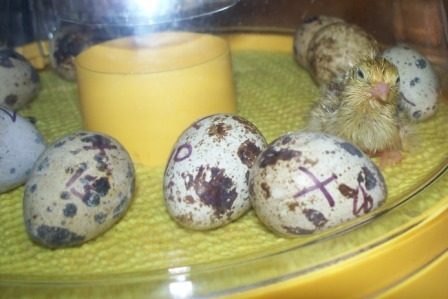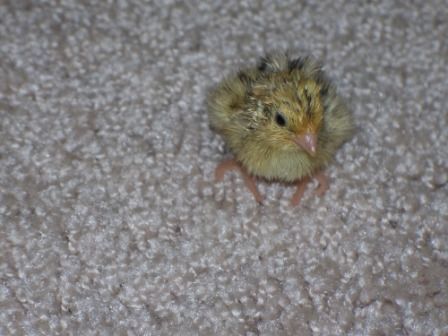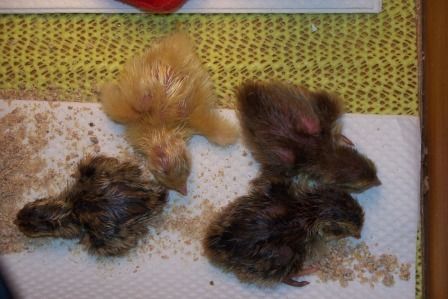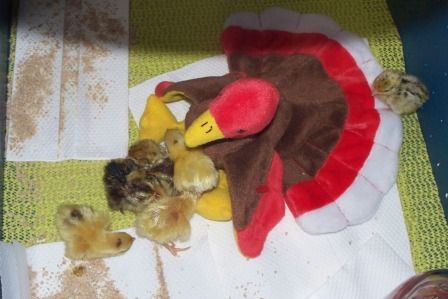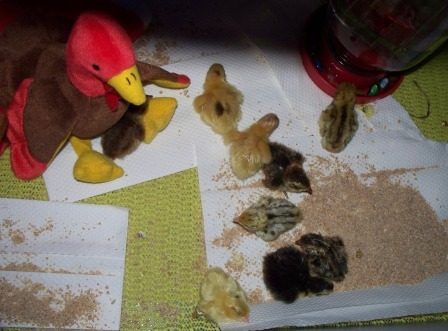Quote:
I'm surprised nobody has helped you out. I'll give it a shot.
1: will i need a thermometer or something to check the temp at?
2: what is the "ideal" temperature?
3: Humidity? How much? how to make it humid?
4: Will i need something to keep the eggs propped up?
5: How often do i turn the eggs?
6: How many eggs do you think this incubator will hold?
You will need a thermomet and a hydrometer and
Walmart sells one that I use. It's small and white and digital and does both. I just lay it in the bators under a window. They cost about $7 at
Walmart.
Chickens should be 99.5 degrees but myself and others keep it at different temperatures. What works best for you. I like mine between 100.2 and 100.6. Some times it climbs or falls but I just make adjustments like i'll cover it with a towel or two or i'll turn on the very small fan that's in the room but not pointing at the bator. Just to circulate the air. I also have my bator sitting up off the table a tad bit for better circulation. I have a domino under each corner. I adjust the humidity by either closing off the the big vent holes or opening them up. If it gets too high i'll open a window briefly to let some out. If the temps hit 102 i'll open the top for about 5 seconds to let some of the heat out and shut it back. Different things to avoid touching the thermostat control. The humidity should stay around 50% for chickens and raise it to 60% during hatch. I don't. I leave mine around 45% to 55%. If it goes below that i'll close up the vent holes or add water, higher and i open the vent holes or open the window for a few seconds to let some out. When they pip, zip and hatch the humidity will go up anyway. If it's too high the chick will drown in the shell before it ever hatches. I would rather have to help out out if it gets stuck than have it drown.
You don't need to keep the eggs propped up, you can lay them on their side. just give them a little roll about 3 times a day. It would be good to put an X on one side and an O on the other so you know they have all been turned right. You can put them in an egg carton with the bottom of the cups cut out for air circulation and prop one side up then the other instead of thurning them. I did that last year and it worked out just fine. You can leave the egg in the carton dring the last 3 days and just don't prop it up anymore or take them out and lay them on the floor. They don't need to be turned at all the last 3 days. I've read the last week is save to stop turning. To get the humidity in the bator you want to use a low dish and put a sponge or a wash cloth in it and fill it with water. You want to get the right temps and humidity before you put in your eggs. You can use a wider dish and/or more sponges. What ever works to get the humidity right. I have a LG and it has water wells and I cut sponges and lay them in each well and a whole sponge outside the well in case I need to get it raised more. I also found that using one of those large syringes for putting juices inside of meat works very well for adding water. You can get the water where you need it without having to move any eggs.
I have no idea how many eggs will fit in your bator. But I suggest that you don't do staggard hatches unless you make another bator to use as a hatcher so you can take the eggs out that are to go in lock down. You want to leave room so you can turn them quickly which if you lined them up so you could just give them a roll the whole row will get turned. The less you have your bator open the better.
When you first put your eggs in the bator after you have stabilized it, the temp and humidity will change. You want to give them time to warm up. Usually 14 hours but not always. The temp may spike after the eggs have warmed up and you will want to get that down to a safe temp. The humidity may also drop so having an extra sponge in there will benefit you then. Just add water to the sponge. I have charts I used to keep track of the temps and humidity everyday and when they got turned, etc. If you pm me with your email address i'll send you a copy. I make a chart for every hatch but I have a turner now and more of a set up than when I first started. I mostly worry about lock down dates and of course i'm a slave to the temps and humidity.
We're working on collecting the parts to make a cabinet incubator and hopefully we will have that for the spring hatches. There are always lots of chicks then and i'll get the quail going again by then also.
I hope I helped. And always keep in mind what works for somebody else doesn't necessarily mean it will work for you. Give advice a shot. IF it don't work don't stick with it. Adjust and combine other opinions to fit your needs.
Good luck





